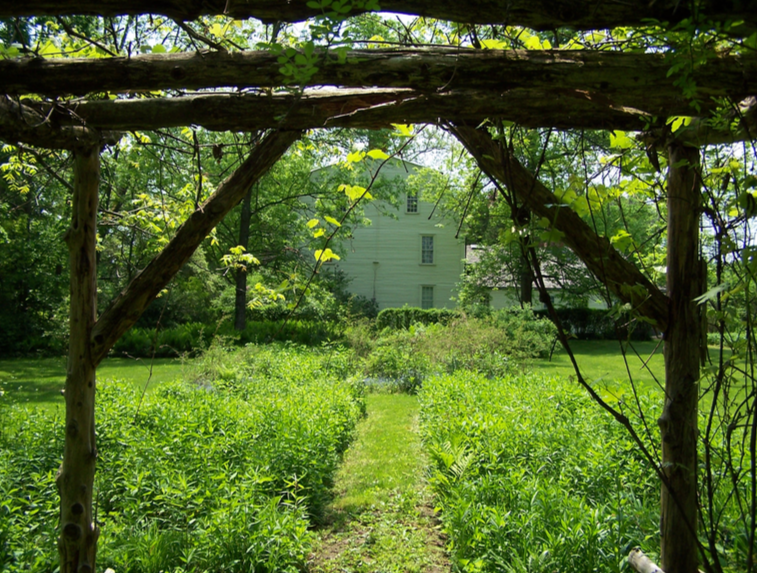A photo of the back veranda dating back to 1797 that was used by indentured servants as a work area. The veranda dates after the abolition of slavery but was still in use as slavery was in the process of being phased out in the North.
The story of Forty Acres, the Porter-Phelps-Huntington House, extends beyond the family that lived within the house. Enslaved people and indentured servants were present on the property from its construction in 1752, and many stayed on after the abolition and gradual abandonment of the practice of enslavement in Massachusetts in the last quarter of the 18th century. The Connecticut River Valley was a hub of slavery in the North, and the Porter Phelps family assigned the most unpleasant tasks on the farmstead to enslaved and indentured servants.
The Porter-Phelps-Huntington Family Papers include diaries, deeds, correspondences, indenture papers and bills of sale that give us a picture of slavery and servitude at Forty Acres and in the Connecticut River Valley. These resources enable the Museum to tell the story of the family’s relationship to enslavement and indentured servitude. This site will attempt to give a glimpse into the stories of these men, women and children who are often neglected in the telling of New England history at historic house museums.
In his book, Slavery in the Connecticut Valley of Massachusetts (Levellers Press (2009)), Robert H. Romer discusses the misconceptions surrounding the role of slaves in Northern households:
Massachusetts slaves were not “just servants”. They were not “just like members of the family”. They were property- bought, sold, and taxed just like real estate, like cows and horses and chairs and kitchen utensils. They were often sold away from their parents or their spouses or their children. Some were born here, many had been kidnapped in Africa. There was nothing in the least bit voluntary about their bondage. They were slaves for life, and if they had children, the children would become slaves like their parents.
For more information find blog posts on enslaved peoples & indentured servitude attached to the left and a Genealogy map attached below:
Genealogy Map derived from the archival material available about enslaved persons at Forty Acres; created by Marla Miller.






